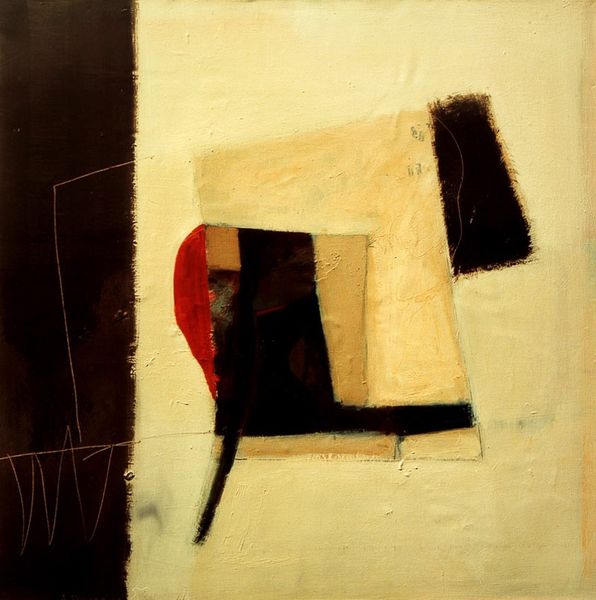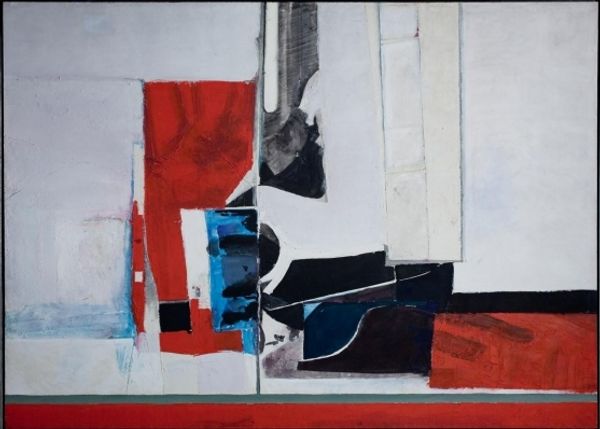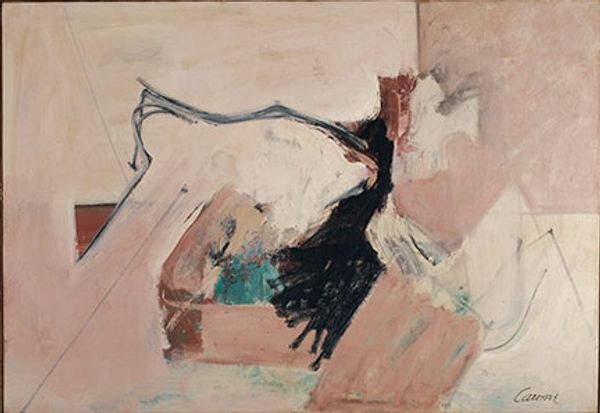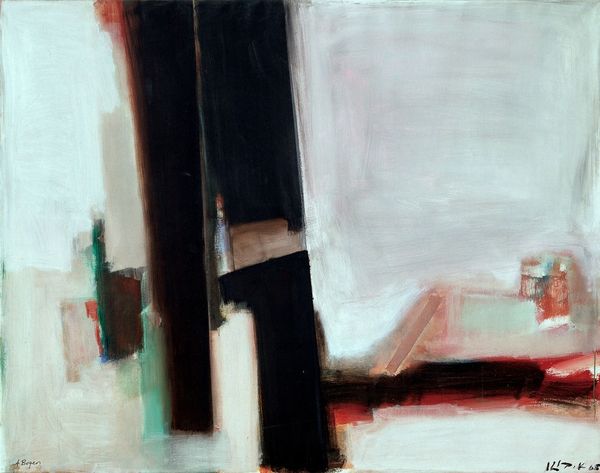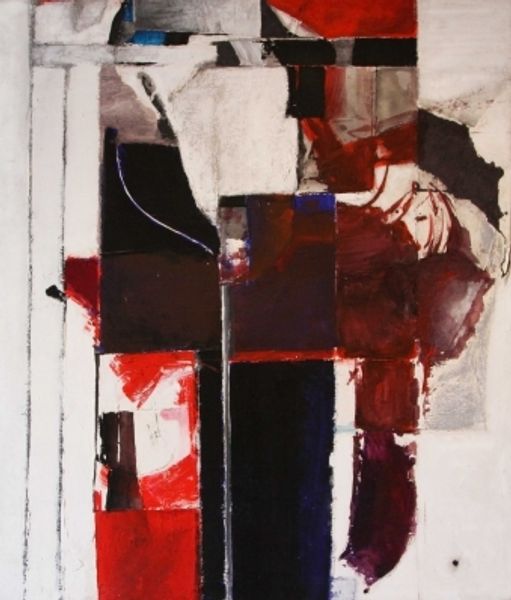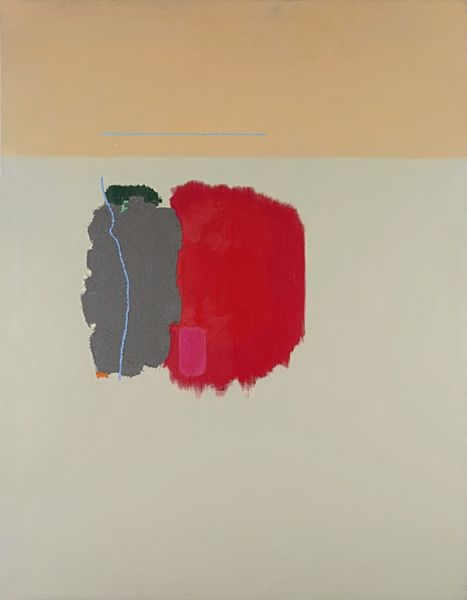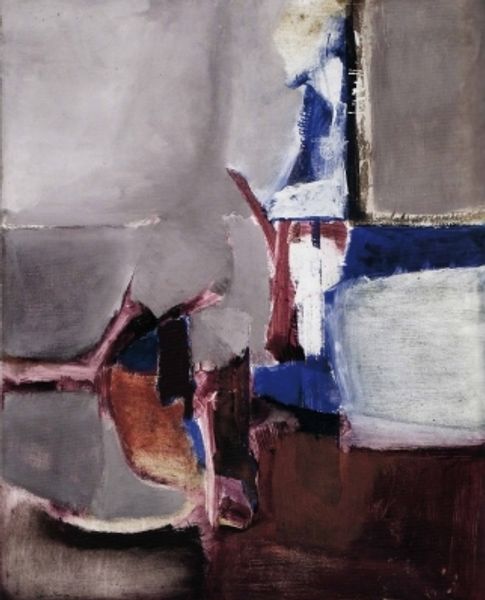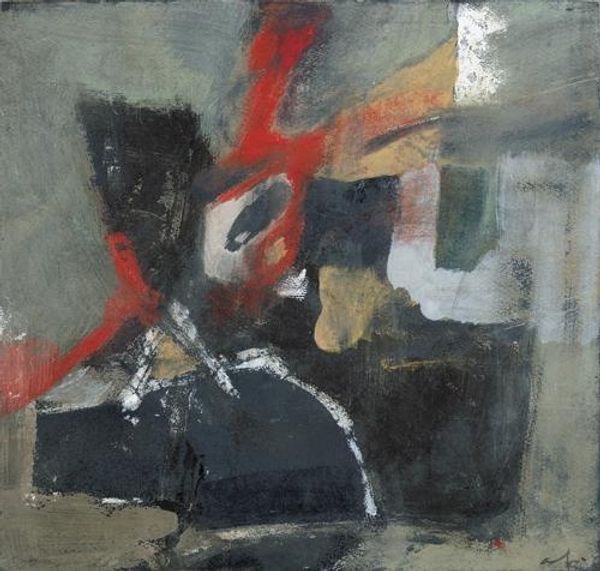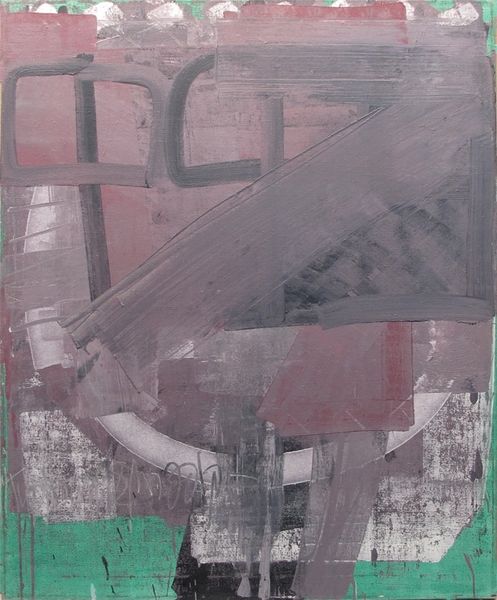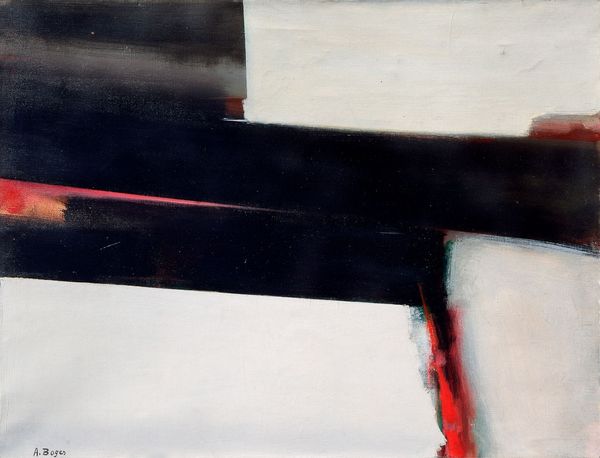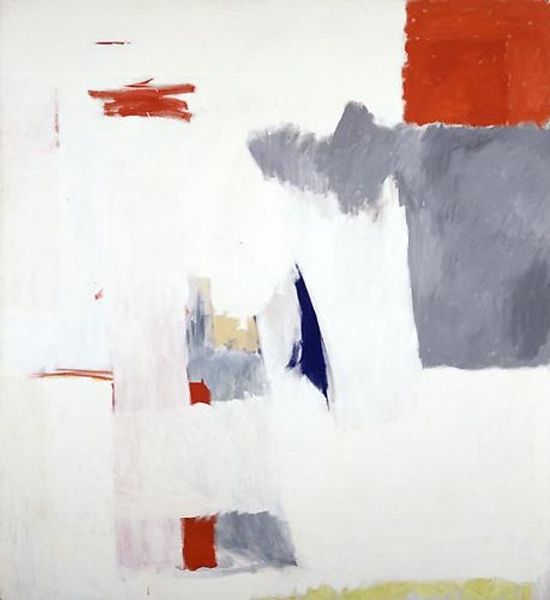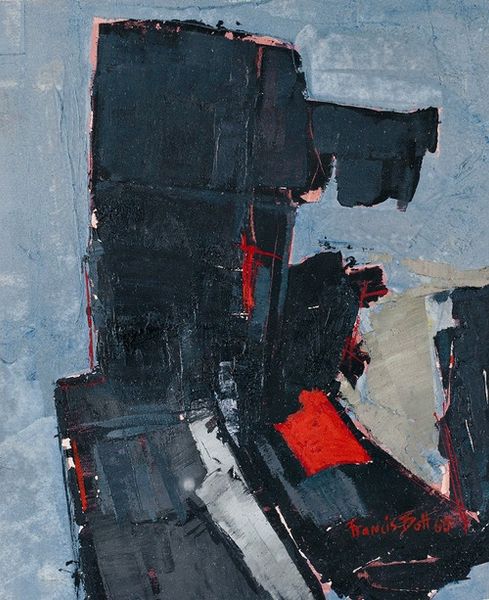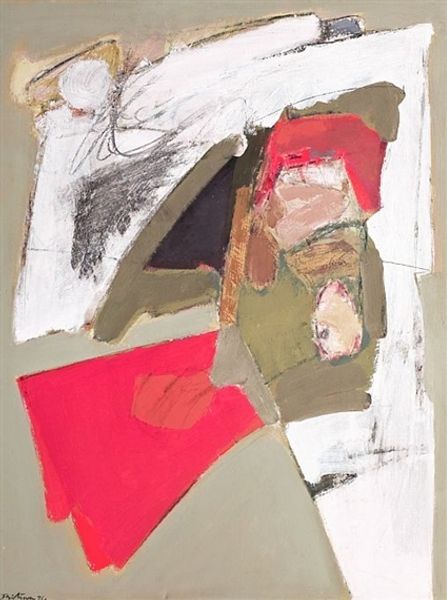
painting, acrylic-paint
#
abstract-expressionism
#
acrylic
#
painting
#
acrylic-paint
#
oil painting
#
neo expressionist
#
geometric
#
abstraction
Copyright: Fernando García Ponce,Fair Use
Editor: Here we have Fernando García Ponce’s "Painting #3" from 1964. It looks like acrylic on canvas. It feels very… architectural to me. Almost like a deconstructed blueprint. What stands out to you about the materials and method here? Curator: Well, for starters, the shift to acrylic paint is crucial. Think of the post-war period: industrial advancement fueling artistic innovation. Acrylics offered a radically different texture and drying time compared to oils, inviting experimentation. Notice how Ponce layers and juxtaposes these stark geometric forms. Does this rapid layering suggest anything to you? Editor: It does give a sense of immediacy… maybe reflecting a faster pace of life in the ‘60s? And does the clean edge relate to mass production of art and material culture? Curator: Exactly! And consider the social context of Mexican art at this time. While muralism dominated earlier decades, artists like Ponce were drawn to abstraction. Was it a move away from state-sponsored art and nationalistic narratives, or some other influence? Editor: Perhaps, seeking freedom in form after that. Almost like an exploration of materials divorced from overtly political purposes, focusing more on individual perception. But doesn’t that still speak to a socioeconomic position from which art is just an end to itself? Curator: Precisely. Who had access to these materials? And whose stories were being told, or not told, through this new mode of abstraction? These choices always connect to a material reality and reveal what is obscured. Editor: I guess seeing it this way encourages me to dig deeper into art that is not just what is visibly portrayed but materially revealed about artists and audiences and producers. Curator: Exactly, by looking at the choices behind making the work, and looking closely at where the parts come from, we can reconstruct a truer image of it, don't you agree?
Comments
No comments
Be the first to comment and join the conversation on the ultimate creative platform.
